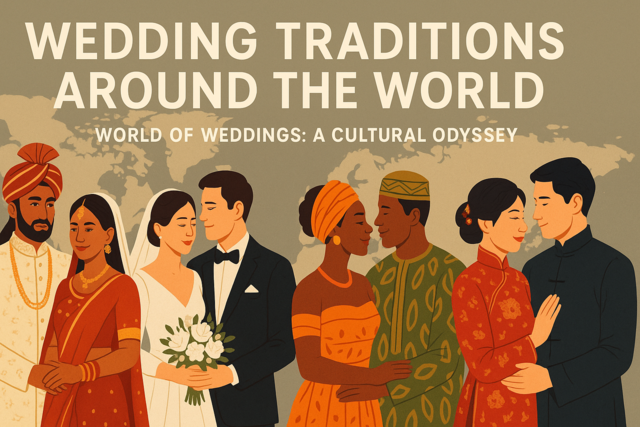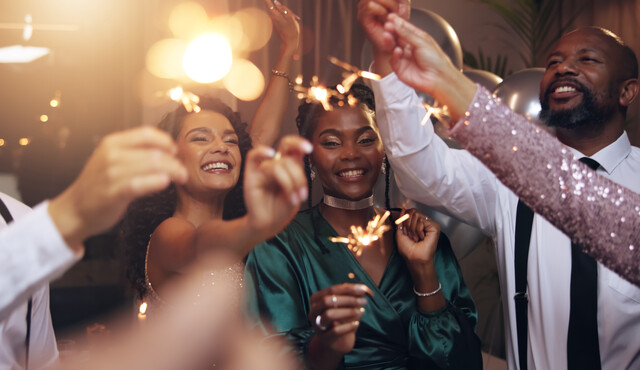Sitting Positions and Walking Styles
Sitting Positions
In conversation, slumping or slouching � whether standing or sitting � conveys laziness and disrespect. One who slumps will likely come across as uninterested in the other person. Thus, it's important to sit and stand up straight in your conversations.
When dining in a restaurant, posture is the first consideration. Don't slouch. Sitting up straight shows that you are alert and engaged. Don't stoop to eat your food.
As a parent, it's important to teach your child how to sit still at the dinner table. This becomes especially prominent when eating in restaurants. It's important to keep the experiences of other patrons in mind � they should not have their dining experience ruined by unruly children and inconsiderate parents. Prepare for taking your children to restaurants with at-home lessons in sitting still at the table.
When attending a performance in a public place such as an auditorium, it's important to sit up straight in your seat and keep your feet on the floor. This is because auditorium seating is often arranged with the intention for everyone to be able to see the stage clearly, and the seat behind can see between the two seats in front. Therefore, slouching sideways or lounging on a partner's shoulder blocks their view. Keep your feet and knees off of the seats in front of you, and don't hog the armrests.
While visiting a person in the hospital, be they a family member or an acquaintance, don't sit on the edge of their bed. You might think this expresses personal concern, but actually, it may cramp or even cause pain for the patient.
Walking Styles
The importance of standing up straight was mentioned above, along with sitting up straight. Slouching conveys laziness or disrespect, and slumping is often perceived as being uninterested in the other person. When walking, this same suggestion applies.
There are protocols of etiquette for all sorts of situations in which we find ourselves traversing ground on foot � walking. On the escalator, keep to the right so that others can pass you if they wish.
When walking with an umbrella, don't tip it so far forward that you can't see foot traffic coming toward you. Close your umbrella when walking under construction scaffolding, unless the structure is dripping and if it is, be careful not to bump the umbrellas of others in this tighter space. Before walking into a dry space, such as a building entryway or the stairs to the train station, be sure to "fluff" the umbrella back and forth a few times to shake off excess water, being careful not to spray anyone else as they walk by.
Some people are so deeply involved in their own little worlds when they walk that they forget they're sharing the sidewalk with other people. This behavior becomes increasingly aggravating as the sidewalk becomes more crowded. When pushing or pulling a baby stroller or rolling suitcase, it's important to remember that you're taking up at least twice your usual space on the sidewalk. Others are so deeply involved in their very loud telephone conversations or text messaging that they barely watch where they're going. Some stop suddenly, dead in their tracks. This throws the rhythm of the sidewalk out of synch. If you need to stop for any reason, you should first leave the main flow of pedestrian traffic. Some people often decide to walk diagonally rather than straight ahead, forcing everyone else to maneuver around them. When walking in a group, be careful not to form a phalanx, or a line of clueless pedestrians walking abreast and making it impossible for anyone to pass. When walking in a group, it's important not to block anyone who would like to get by. On a crowded sidewalk, a group should walk in a single file. Other people simply plant themselves in the middle of the sidewalk to chat together, apparently oblivious to other pedestrians. When you cross paths with friends and decide to stop and chat, it's important to move to one side so that you don't impede the foot traffic on the sidewalk, whether there are 2 or 20 people stopping for a conversation. Finally, spitting on the pavement is nasty, unhygienic, and rude. Directing the spittle into the gutter is not less disgusting to those who have the displeasure of witnessing it.
When a man and woman find themselves walking together, whether by plan or happenstance, traditional ways often still flourish. On the street, the man traditionally walks on the curb side. This tradition comes from the idea that women needed to be shielded from potential dangers posed by passing a horse-and-buggy parade. A woman precedes a man through the door, on an escalator (unless she needs help getting on or off), and through a narrow outdoor passageway. The man precedes the woman while walking down a steep ramp or slippery slope, on uneven ground, and through crowds, taking her hand as necessary. At the end of a date, decency, respect, and safety are upheld by walking the date to the door.
As a neighbor sharing an upstairs-downstairs living arrangement, the upstairs neighbor should take care not to walk so heavily that the downstairs neighbor is disturbed. The same holds for doing step exercises over the downstairs neighbors' heads.
Dress and Grooming
Society's standards have loosened quite a bit over the years in terms of formality of attire. This makes sense in terms of making everyday life a bit easier. Nevertheless, casual should never be interpreted as inappropriate or sloppy. Our clothing and grooming choices convey important information to the world around us. They indicate how we choose to present ourselves and how important we consider the occasion. Our choices in this regards should reflect the significance we attach to the event or activity � whether this be a religious gathering or service, an evening at the opera, or an impromptu gathering of close friends. Individuality and self-expression are important, and our clothing and grooming choices can be important avenues for these personal representations of self. At the same time, all dressing and grooming decisions should be guided by principles of respect and consideration for others in addition to good common sense.
Our clothing choices are nonverbal expressions, and like all nonverbal expressions they have communicative value and send messages to others. Respect for cultural, religious, and regional customs is reflected in our clothing choices, and guides our consideration in attire. Appearing presentable, such as wearing well-pressed jeans to a worship service, may feel appropriate to the wearer, but be deemed inappropriate to the setting for other worshipers. These other worshipers might even take offense to the jeans in that setting, considering that the inappropriateness of the attire diminishes the respect demanded by the setting, for everyone. Often more important that the clothes themselves is the message sent by the chosen attire.
The American norm of today favors casual attire over traditional dress. However, traditional dress has not disappeared completely. Moving toward casual attire has slowed somewhat, while moving toward increased comfort has not, and in some cases, traditional dress has become more popular. This is due, I part, to an increasing sense that "casual" has been misinterpreted and equated with "sloppy", and contributes to workplace laxity. Your appearance should reflect the situation, so be prepared to adapt your attire for what you are doing. If you're presenting to the board of directors, your appearance should reflect the same level of precision and attention to detail as the presentation itself. Similarly, if you are meeting with a client at a company where body piercings, tattoos and jeans are the norm, you can create the wrong impression by dressing too conservatively.
The essential concern in selecting casual clothing and accessories is to not cross the line into poor taste. Here are some things to avoid:
Sloppy
- Untucked shirttail
- Ragged hem
- Mismatched shoes or socks
- Clothing stains
- Wrinkled clothing
- Frayed or worn-looking clothing
Inappropriate
- See-through blouses
- Low-cut cleavage or mesh tank tops at the office
- Barefoot and topless men, when not at the beach
- Children dressed provocatively
- Teen or adolescent girls in clingy tops or with exposed cleavage
- Stiletto shoes at work
Tacky
- White socks with dress clothing
- Low waistlines exposing massive bare skin
- Women in curlers in public
- Jogging suits in fine-dining restaurants
- Torn jeans in the workplace
Utterly Clueless
- Sneakers or boat-style shoes with suits
- Men and boys wearing hats in restaurants or at dinner tables
- Baseball caps (worn by anyone, at any age) in restaurants or at dinner tables
- Tank tops in business situations
- Ill-fitting clothing, such as a suit that's too tight
- Men in dressy lace-up shoes with jeans
Social situations also bear questions of traditional or casual dress. For example, a sport jacket or nice dress may be the most casual attire acceptable for a cocktail party, while shorts and flip-flops may be fine for a backyard cookout.
Formal wear sticks most firmly with tradition. This is because the tuxedo, cocktail dress, and evening gown may well satisfy our appetite for traditional elegance.
What's appropriate?
It's not always easy to know what to wear in every situation. Common sense and consideration for others come into play. It's important to trust your instincts. Your own knowledge about a certain situation is just as effective as any rules about style, and more important as well. You'll always make the most correct clothing decisions when you think first and ask for guidance when you're not sure. When the wearer makes a genuine effort to do the right thing, most fashion mistakes are minor.
Appropriately dressing generally consideration for the sensibilities of others. When the situation is unfamiliar and filled with new people, it's generally wisest to err on the side of conservatism. When in doubt, it's generally safer to under-dress than to over-dress.
Local and regional tastes and customs also govern clothing appropriateness. Observe the attire of others in your surroundings and use these observations as a guide for your own clothing decisions. This point becomes particularly prominent in foreign cultures. It's not necessary to adopt the local clothing flavors completely � such as wearing black in New York City or bright colors in Miami, but try to blend in as much as possible. For example, don't wear shorts and a t-shirt for an event where the norm is much dressier.
Accessories
Accessories are an integral part of dressing. Ties, jewelry, and cologne can all make the outfit more formal, less formal, seem expensive, or appear cheap. Accessories, like clothing, change according to the situation.
Hats
While hats have lost their role as an essential item of clothing as in days past, they remain popular for both sexes for both fashion and function. It's as important to know when to remove a hat as it is to know what hat is appropriate for the occasion.
Men
Hats can be left on:
- Outdoors
- At athletic events (both indoors and out)
- On public transportation
- At religious services, as required
- In public buildings (e.g. post office, airports)
- In hotel and office lobbies
- In elevators
Remove hats, including baseball caps:
- In a home
- Indoors at work, especially in an office (unless the job requires it)
- At mealtime, at the table
- In restaurants and coffee shops
- At a movie or any indoor performance
- During the playing of the national anthem
- When the United States flag passes by, as in a parade
Women
Hats and nonbaseball caps can be left on:
- In a home and other dwellings (except winter headgear)
- At luncheons, weddings, garden parties, etc.
- At religious services
- In a theater, movie, auditorium, or other large gathering if it doesn't block the view of those behind
- During the playing of the national anthem
- When the United States flag passes by, as in a parade
Remove hats:
- Indoors at work, especially in an office (unless the job requires it)
- Anywhere hats may block another's view
Remove baseball-style (unisex) caps:
- In a home
- Indoors at work, especially in an office (unless the job requires it)
- At mealtime, at the table
- In restaurants and coffee shops
- At a movie or play
- During the playing of the national anthem
- When the United States flag passes by, as in a parade
Jewelry
Jewelry is always an adornment and should not overpower your total look, whether the jewelry is costume or the real thing. In business settings, avoid too much ornamentation with rings, bracelets, and other jewelry. It is important to always keep in mind the occasion and the sensitivities of others. For example, it is courteous to not wear religious jewelry when attending a service of another faith.
Jewelry should be quiet. In social situations, turn off watches that beep or chime. Bracelets and earrings that jingle, beaded necklaces that rattle and clank, and any sort of bells can cause great discomfort to those around you, particularly in places like lecture halls and the theater where silence matters.
Jewelry should be clean and in good repair. A well-groomed appearance can be ruined by a dirt-encrusted ring or frayed watchband. When you check your jewelry regularly for damage or breaks, you will spare others the bother of having to search for your lost or broken accessories.
Piercings and tattoos
In truth, when it comes to body piercings and tattoos, one person's adornment is another's mutilation. Ear piercing is acceptable, but more extreme forms of piercing and tattooing can not only be distracting, but can make others literally feel queasy. Piercing can also lead to skin infections, which, while easily treated, are unpleasant to look at. In fact, narrow-minded or not, some people believe that body piercing and tattoos are just tacky.
Many employers consider displayed tattoos and piercings as unprofessional. This is such an important point that many employment counselors frequently advise job applicants against wearing piercing jewelry other than earrings � one pair for a woman, a single one for a man. They also suggest covering visible tattoos, if possible, for job interviews. A good rule of thumb is that when in doubt, especially in the business world, don't wear it or show it.
Eyewear
Your lenses should be clean, smudge-free, and in good overall condition. Be sure not to let a temporary fix, such as fastening a broken frame with a safety pin or taping a broken nosepiece, become permanent.
Sunglasses should be removed indoors, except in the case of very harsh or glaring lighting. Outside of medical necessity, wearing sunglasses indoors or at night can easily be regarded by others as pretentious, attention-grabbing, or secretive.
Briefcases, handbags, and laptop cases
For business, the briefcase should be of good quality. For a simple stack of papers, a professional-looking envelope or folder carried under the arm is an acceptable choice. Briefcases made of plastic or aluminum may be fine in some fields, though appear unprofessional in more traditional ones.
Purses and handbags should be appropriate to the occasion. For example, a large straw bag would not be appropriate for a business meeting. Bags and shoes no longer have to match. Specific color rules, such as no black accessories with a blue outfit, have similarly vanished, and women no longer feel the need to have a purse to match every outfit. Handbags should be as large as you need them to be, but not so large that it inconveniences others in crowded places.
Laptop cases are generally made of microfiber fabrics. Keeps yours clean and neat. When these are worn or discolored, it can make you appear inattentive to basic details.
Invitations
Terms on party invitations, such as "black tie optional" or "smart casual", are placed to help guide the recipient's clothing choices as appropriate to the occasion, but they also tend to raise questions. On invitations, the thoughtful host or hostess will stick with standard categories (e.g. business casual, semi-formal), using ambiguous terms (smart casual, sport casual), only along with an explanation.
Traditional and current dress notations:
White Tie
Men
- Black tailcoat
- Matching trousers with single stripe of satin or braid
- White piqu� wing-collared shirt with stiff front
- White vest
- White bow tie
- White or gray gloves
- Black patent shoes
- Black dress socks
Women
- Formal evening gown
Black Tie
Men
- Black tuxedo jacket
- Matching trousers
- Formal (piqu� or pleated-front)
- White shirt
- Black (silk, shiny satin, or twill) bow tie
- Black cummerbund to match tie
- Dressy suspenders to ensure good fit (optional)
- Black patent shoes
- Black dress socks
- No gloves
In summer on a cruise, may have:
- White dinner jacket
- Black tuxedo trousers
- Other black tie wardrobe
Women
- Formal evening dress or short, dressy cocktail dress
Black Tie Optional
Men
- Either tuxedo (see "Black Tie") or dark suit
- White shirt
- Conservative tie
Women
- Formal evening dress, short dressy cocktail dress, or dressy separates
Creative Black Tie
Men
- Tuxedo combined with trendy or whimsical items, such as
-
Black shirt
-
Matching colored or patterned bow tie and cummerbund
- Black patent or dressy black leather shoes
- Black dress socks
Women
- Formal evening gown, dressy cocktail dress, or dressy separates
- Accessorized with items such as
-
Ostrich-feather boa
-
Colorful brooch
-
Elegant shawl
Semiformal
Men
- Dark, dressy business-type suit (usually worsted wool)
- With or without matching vest
- White shirt
- Conservative tie
- Dressy leather shoes
- Dress socks
Women
- Short afternoon or cocktail dress or long, dressy skirt and top
Festive Attire
Men
- Slacks
- Seasonal sport coat or blazer in color of choice
- Open-collar shirt
- Possibly a holiday-themed tie
Women
- Short cocktail dress or long, dressy skirt and top or dressy pants outfit
Dressy Casual
Men
- Slacks
- Seasonal sport coat or blazer
- Open-collar shirt
Women
- Street-length dress, skirt and nice top, or dressy pants outfit
Business Casual
Men
- Khakis or slacks
- Seasonal sport coat or blazer
- Open-collar shirt
Women
- Khakis or slacks, skirt,
- Open-collar shirt or knit shirt
- Sweater
Sport Casual
Men
- Khakis or jeans
- Nice tee, polo, or casual button-down-the-front shirt
Women
- Khakis or jeans
- Nice tee, polo, or casual button-down-the-front shirt
Beach Casual
Men
- Khakis or shorts (cargo or Bermuda)
- Knit shirt
- Sport jacket optional
Women
- Sundress or khakis or shorts (cargo or Bermuda)
- Open-collar shirt or knit shirt
- Lightweight jacket or sweater
Holiday Casual
- Clothing is the same as for "Business Casual", with holiday colors or designs added in. Just be careful not to overdo.
Eight Men's Fashion Faux-Pas
- Poorly fitted clothing � too baggy or too tight
- Shoes in poor condition
- Sandals with a suit
- Socks with sandals
- Socks that show when you're standing, shins that show when you're sitting (due to short socks)
- Tie with short-sleeved shirt
- Too much jewelry � a lot of chains, rings, bracelets
- Dandruff flakes on clothing
Women
White
It's okay to wear white any day of the year. Today's question is about the fabric's weight, not its color. Lightweight fabrics (cotton, linen, organdy) in white and pastels are appropriate in warm and hot months, while heavier fabrics, "winter whites", (wools, heavy cottons and corduroy, suede, satin) are appropriate for the cool and cold months. Climates vary across the country so your choice of whether summer or winter whites will depend on the temperature where you are. When traveling, check local customs and weather forecasts before packing.
It's okay to wear white to a wedding as long as the outfit doesn't compete with the bride's.
Skin exposure
Too much skin exposure will yield harsh judgements for a woman of any age.
Decorous dressing means understanding that exercising personal taste also carries the responsibility to show concern for the feelings of others. A neckline can be attractively d�collet� or plunge into lewdness. People may not pay any attention to your ideas if you're presenting them wearing a see-through blouse. How appropriate is the string bikini on a beach outing with parents and children?
Makeup
In terms of makeup, a clean, natural look is generally preferred for work and daytime activities, while a bolder look may be more appropriate for nighttime social events. Applying makeup should be done in private, and touching it up may be appropriate around others if handled discreetly. Freshening lipstick in public is acceptable if you're not obvious about it. Allow the situation to guide you.
Eight Women's Fashion Faux-Pas
- Clothing too tight, too short, or too revealing for the occasion
- Dandruff flakes on dark garments
- Visible stocking-foot seams with open-toed shoes
- Buttoned garments that gap and show skin or underwear
- Overly dressy or too-high heels with casual clothes like jeans
- Wearing a dress meant for evening during the day
- Jewelry that jingles or clangs and annoys others
- Torn hems and showing linings
This chapter contains information on the etiquette of sitting positions and walking styles, and proper attire for various occasions and situations.

























